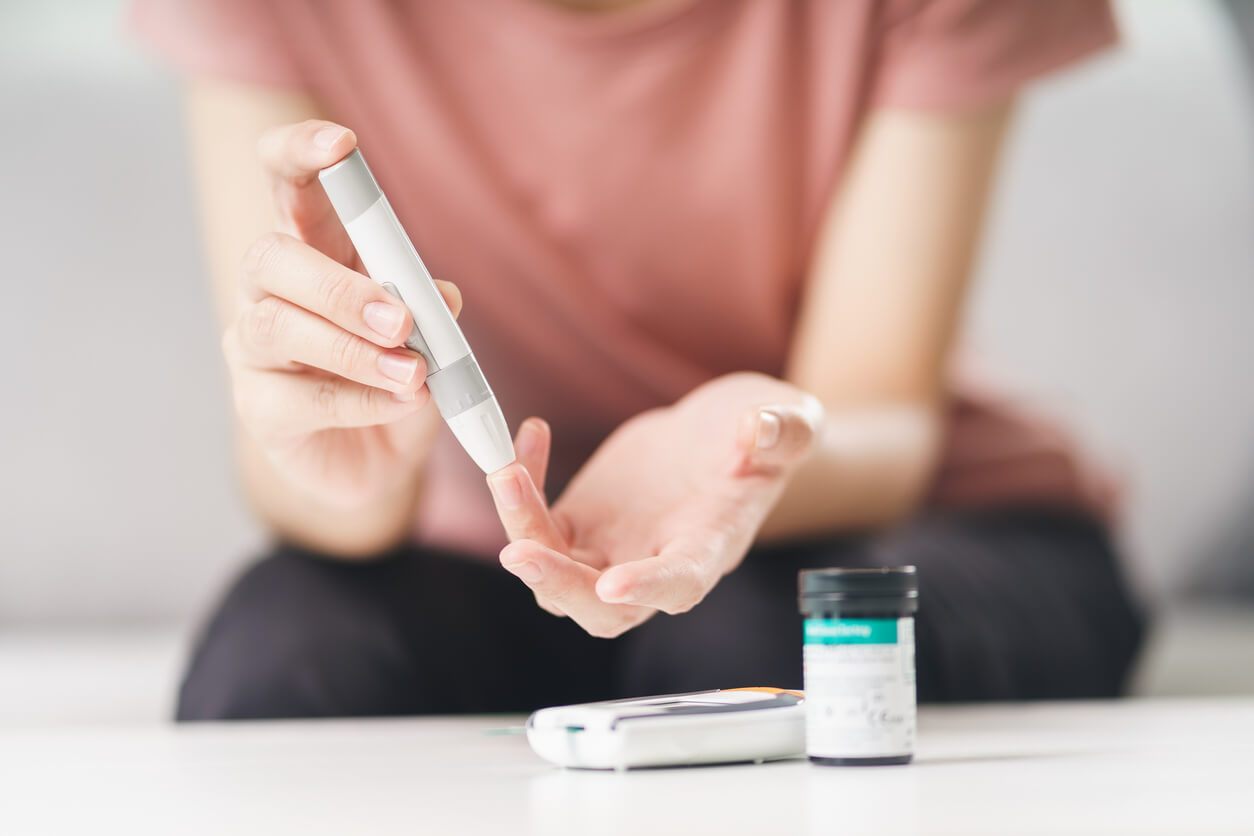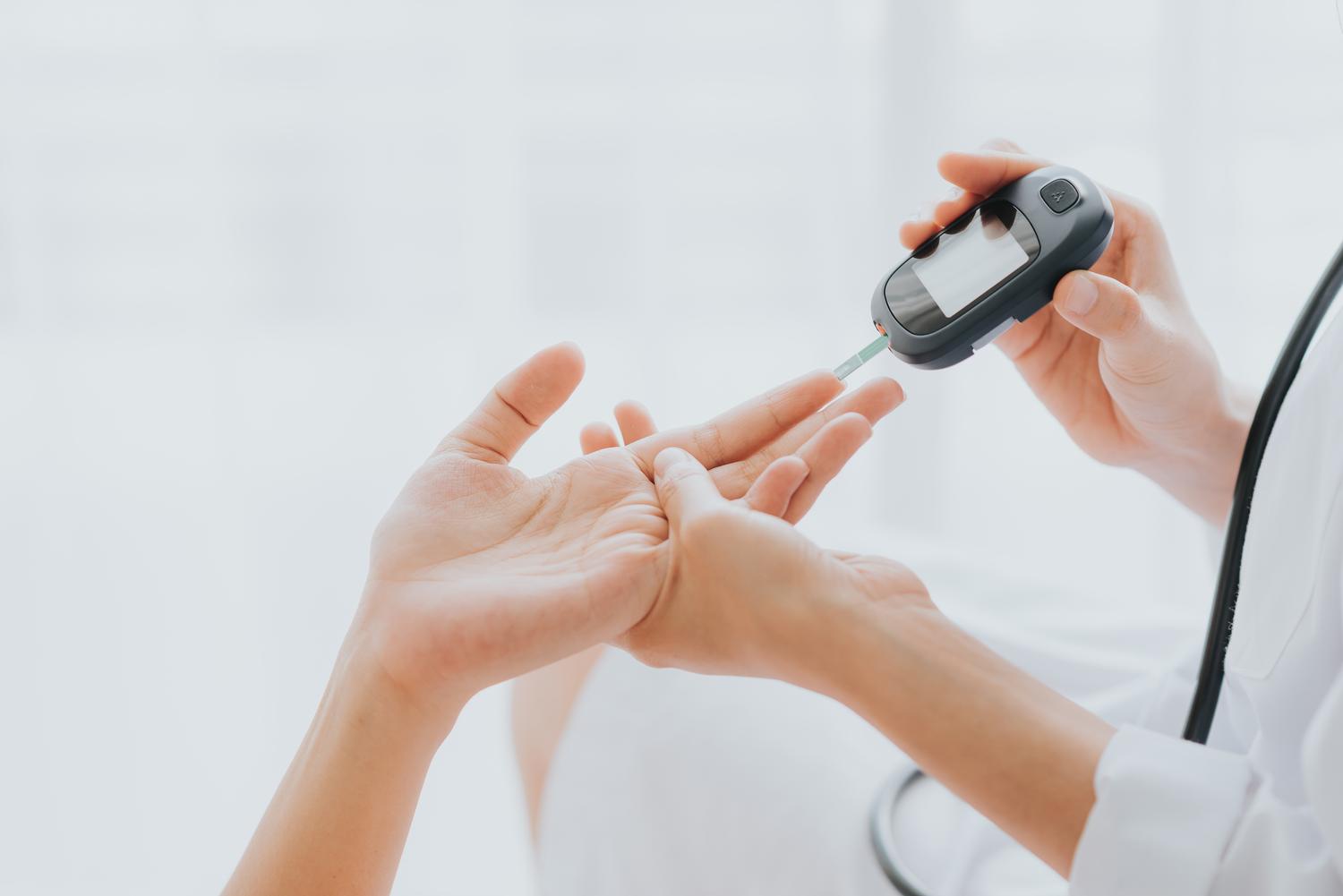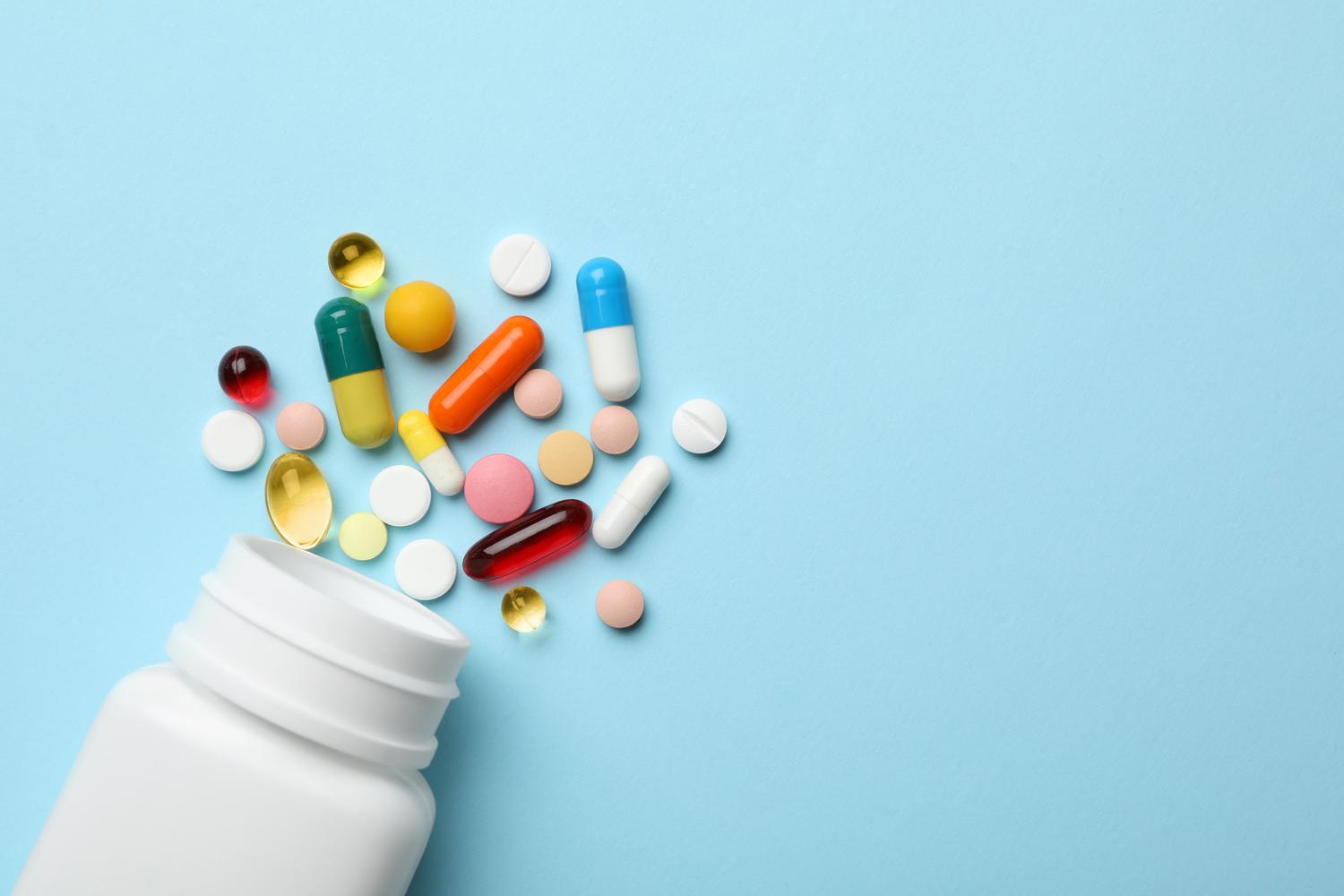Type 2 Diabetes: Causes, Symptoms, and Treatment
A comprehensive guide to type 2 diabetes
Diabetes is a family of diseases that impact millions of individuals worldwide. This health issue profoundly impacts the United States, affecting a staggering 37.3 million individuals, accounting for approximately 11.3% of the entire population (source: CDC). Worryingly, diabetes is on the rise, particularly among those under 20. The CDC's research reveals concerning trends, including a startling 95% increase in diagnosed cases of type 2 diabetes and a staggering 45% increase in diagnosed cases of type 1 diabetes in this age group.
Type 1 and type 2 diabetes have marked differences in their causes, symptoms, and the treatment options needed to manage the disease. In this article, we’ll provide an overview of type 2 diabetes and what sets it apart from other forms of diabetes.
Type 2 diabetes causes
Type 2 diabetes is a chronic metabolic disorder characterized by elevated blood glucose levels, also called “blood sugar.” It is a complex condition with multiple causes, and its development involves a combination of genetic, lifestyle, and environmental factors.
Type 2 diabetes occurs when the pancreas produces insulin, but the body misuses it. Excessive blood sugar levels cause cells in the pancreas to release more insulin. High levels of insulin production cause cells in the body to become resistant to it, meaning that the cells cannot take in enough sugar to keep blood sugar levels from rising.
Type 2 diabetes risk factors
The development of diabetes has been linked to multiple risk factors. Some of these are controllable, while others are due to genetic and environmental factors.
Common risk factors associated with type 2 diabetes include:
Genetics: Certain genes can make individuals more susceptible to the development of type 2 diabetes. While having these genes increases the risk, it does not guarantee that someone will develop diabetes. Family history of the disease can also play a role in determining an individual's likelihood of developing type 2 diabetes.
Racial identity: Studies have consistently shown that specificacial and ethnic populations, such as African Americans, Hispanics, Native Americans, and some Asian groups, are at a higher risk of developing type 2 diabetes compared to non-Hispanic whites. These disparities can be attributed to a complex interplay of genetic, environmental, and socioeconomic factors. Genetic predisposition and susceptibility to insulin resistance may vary among racial groups. Additionally, socio-economic factors like access to healthcare, diet, physical activity levels, and stressors can contribute to these disparities.
Obesity and exercise: Obesity and physical inactivity are major risk factors for type 2 diabetes. Excess body fat, especially abdominal fat, leads to insulin resistance. Fat cells release inflammatory substances that interfere with insulin signaling, worsening insulin resistance. Diets high in sugary foods, refined carbohydrates, and saturated fats can lead to weight gain and insulin resistance. Conversely, a diet rich in whole grains, fruits, vegetables, lean proteins, and healthy fats can lower diabetes risk.
Similarly, regular physical activity helps the body utilize glucose more efficiently and improve insulin sensitivity. A sedentary lifestyle can lead to weight gain and exacerbate insulin resistance, increasing diabetes risk.
Age: Age can also contribute to an increased risk of developing type 2 diabetes. Type 2 diabetes is more common in people over 35, partly due to changes in metabolism and activity levels.
Hormonal changes: Hormonal changes are also linked to type 2 diabetes. Some women develop a temporary form of diabetes during pregnancy called gestational diabetes. While this condition usually resolves after childbirth, women with gestational diabetes are at an increased risk of developing type 2 diabetes later in life.
In addition, conditions that affect hormone levels, such as polycystic ovary syndrome (PCOS) and hormonal disorders, can increase the risk of type 2 diabetes. These hormonal imbalances can affect insulin sensitivity and glucose metabolism.
Preventing or managing type 2 diabetes often involves maintaining a healthy weight, engaging in regular physical activity, making nutritious dietary choices, and addressing other risk factors. Early detection and effective management are essential for reducing the risk of complications associated with this chronic disease.
Type 2 diabetes symptoms
The symptoms of type 2 diabetes generally begin at an early age. They are often relatively mild as they first start to appear, becoming more intense as the disease progresses. In fact, many people with type 2 diabetes have had the disease for years before knowing it.
Common symptoms of type 2 diabetes include:
- Increased thirst
- Frequent urination
- Unexplained weight loss or gain
- Fatigue
- Blurred vision
- Slow healing of wounds or sores
- Frequent infections, particularly skin, urinary tract, or yeast infections
- Tingling or numbness in the extremities
- Increased hunger
- Darkened skin patches, especially around the neck or armpits
- High blood pressure
- Elevated levels of sugar in the blood (hyperglycemia)
Type 2 diabetes complications
Patients can prevent type 2 diabetes's severe complications by carefully managing the condition. However, several million cases of type 2 diabetes go undiagnosed. If left untreated or poorly managed, type 2 diabetes has the potential to cause serious, even life-threatening, complications.
Complications caused by type 2 diabetes include:
Cardiovascular Complications:
- Atherosclerosis: Narrowing of blood vessels due to plaque buildup, increasing the risk of heart attacks and strokes.
- Hypertension: High blood pressure can strain the heart and blood vessels, leading to severe complications or death.
Eye Complications (Diabetic Retinopathy): Diabetic retinopathy, where high blood sugar damages the blood vessels in the retina, potentially causing vision problems and even blindness, is a common complication of diabetes. Additionally, diabetes can increase the risk of other eye issues, like cataracts and glaucoma.
Hearing Loss: The relationship between type 2 diabetes and hearing loss is complex and not entirely understood. However, hearing loss is about twice as common in people with diabetes as those who do not have diabetes.
Kidney Disease (Diabetic Nephropathy): Damage to the kidneys' filtering units, potentially leading to kidney failure.
Neuropathy (Nerve Damage):
- Peripheral Neuropathy: Numbness, tingling, and pain in the extremities.
- Autonomic Neuropathy: Affecting the nerves that control vital functions, leading to digestive, urinary, and cardiovascular issues.
Foot Complications:
- Ulcers: Slow-healing sores on the feet that can become infected.
- Peripheral Arterial Disease: Reduced blood flow to the legs and feet, increasing the risk of infections and the need for amputations.
Skin Complications: People with diabetes may be more susceptible to skin infections and conditions, such as bacterial or fungal infections and diabetic dermopathy.
Slower Healing: Weakened immune function and impaired wound healing can lead to a higher risk of infection.
Complications in Pregnancy: Type 2 diabetes can lead to pregnancy complications. High blood sugar levels during pregnancy, known as gestational diabetes, can increase the risk of preterm birth, preeclampsia (high blood pressure), and larger birth weight, which may lead to difficulties during delivery. It can also raise the baby's risk of developing low blood sugar shortly after birth.
Detecting problems early and taking action is essential to lessen complications’ effect on the health and quality of life in people with type 2 diabetes. Managing type 2 diabetes well can significantly lower the chances of experiencing these issues.
Type 2 diabetes diagnosis
A hemoglobin A1c Lab Test, also called A1c or HbA1c, is a test that measures the average amount of blood sugar attached to your hemoglobin over the past three months. Hemoglobin is a protein in your red blood cells that carries oxygen throughout your body.
The results of an A1c test are given as percentages. These correspond to your blood sugar levels.
- Below 5.7%: A1c levels below 5.7% indicate healthy blood sugar levels. This means you are not currently at risk of developing diabetes.
- Between 5.7-6.4%: This range indicates prediabetes, a serious health condition. Prediabetes requires immediate treatment to manage blood sugar levels and prevent the development of type 2 diabetes.
- 6.5% or higher (after two separate tests): Blood sugar levels above 6.5% indicate that you have developed diabetes. Doctors will order two independent A1c tests to test dangerous blood sugar levels conclusively. If both tests return with blood sugar levels over 6.5%, they will begin treating you for diabetes.
For individuals already managing diabetes, doctors will aim to keep blood sugar levels under 7%. Blood sugar levels over 7% may require an adjustment in your treatment plan.
Type 2 diabetes treatment
Type 2 diabetes cannot be cured but can go into remission through careful management and treatment.
Type 2 diabetes is managed with a combination of:
- Healthy diet
- Regular exercise
- Blood sugar monitoring
- Medication
Healthy diet
There is no singular diet used to manage type 2 diabetes, but it is recommended that you create a healthy eating plan that focuses on these food strategies:
Balanced and Regular Meals: Aim for balanced meals that include a variety of food groups, including lean protein sources, whole grains, vegetables, and fruits. High-fiber foods like veggies, fruits, and whole grains promote fullness and help stabilize blood sugar levels. When using fats, opt for sources of healthy fats like avocados, nuts, seeds, and olive oil while limiting saturated and trans fats found in fried foods, fatty cuts of meat, and processed snacks.
Establish a routine for meals and snacks to help regulate blood sugar levels. Avoid skipping meals, and be mindful of portion sizes to help regulate calorie intake and blood sugar levels. If necessary, include balanced snacks between meals to maintain steady blood sugar levels. Opt for options like Greek yogurt, nuts, or raw vegetables with hummus.
Carbohydrate Monitoring: Monitor and manage carbohydrate intake, as carbohydrates significantly impact blood sugar levels. Opt for complex carbohydrates like whole grains (brown rice, quinoa, whole wheat pasta) and legumes (beans, lentils) over refined grains and sugary foods. Minimize or eliminate foods and beverages with added sugars, such as sugary drinks, candy, and processed snacks.
Consult a Dietitian: Your health care provider may recommend consulting a registered dietitian (RDN) for personalized guidance tailored to your needs and preferences. A dietitian can help you identify healthy food options, structure nutritious meal plans, and develop healthy eating habits to avoid blood sugar spikes and dips.
Blood sugar monitoring
Regular monitoring of blood glucose levels is essential for managing type 2 diabetes effectively. People with diabetes often use blood glucose meters to check their levels several times daily. Continuous glucose monitoring (CGM) systems provide real-time data, helping individuals make timely insulin adjustments.
Physical activity
Exercise, along with a healthy diet and regular blood sugar monitoring, can help lower blood sugar levels and improve insulin sensitivity.
There are various types of physical activities that individuals with type 2 diabetes can incorporate into their daily routines:
Aerobic Exercise: Aerobic activities such as brisk walking, jogging, cycling, swimming, and dancing are excellent for managing type 2 diabetes. These exercises increase heart rate and breathing, which helps the body use glucose for energy and improves cardiovascular fitness.
Aim for at least 150 minutes of moderate-intensity aerobic exercise per week, as health guidelines recommend.
Strength Training: Strength or resistance training exercises involving weights, resistance bands, or bodyweight exercises like push-ups and squats help build muscle mass. More muscle means improved insulin sensitivity, as muscles can absorb and use glucose effectively. Strength training should be included in the exercise routine at least two to three times a week.
Everyday Activities: Incorporating physical activity into daily routines can be highly beneficial. This includes taking the stairs instead of the elevator, gardening, housecleaning, or walking instead of driving for short trips. Limit daily inactivity by standing, walking around, or doing light physical activity every 30 minutes.
Remember that consistency is key, and gradually increasing the intensity and duration of physical activity is often the best approach to reap the full benefits of exercise in diabetes management.
Medication
If a healthy diet and regular physical activity do not adequately improve blood sugar levels, your health care provider may prescribe medication to treat the condition.
The main types of diabetes medications approved by the Food and Drug Administration (FDA) for the treatment of type 2 diabetes include:
Alpha-glucosidase inhibitors: Alpha-glucoside inhibitors slow the body’s ability to break down starches and sugars ingested from food, which slows the rise in blood sugar levels after a meal. Alpha-glucosidase inhibitors are less commonly used than other forms of medication as they can cause gastrointestinal side effects.
Alpha-glucosidase inhibitors include:
- Acarbose (Precose)
- Miglitol (Glyset)
Biguanides: Biguanides reduce the amount of insulin your liver produces and releases into the bloodstream. These drugs also make muscle tissue more sensitive to insulin. This allows the tissue to absorb more insulin and use the glucose for energy.
Biguanides include:
- Metformin (generic for Glucophage, Glumetza, and Fortamet)
DPP-4 inhibitors: DPP-4 inhibitors prevent the breakdown of the naturally occurring hormones GLP-1 and GIP in the body. These hormones reduce blood glucose levels but are metabolized quickly. By slowing the breakdown of GLP-1 and GIP, DPP-4 inhibitors keep the hormones active longer. This helps lower blood glucose levels as they rise. DPP-4 inhibitors are generally well-tolerated and do not cause weight gain.
DPP-4 inhibitors include:
- Linagliptin (generic for Tradjenta)
- Alogliptin (generic for Nesina)
- Sitagliptin (generic for Januvia)
- Saxagliptin (generic for Onglyza)
Sulfonylureas: Sulfonylureas drugs trigger the pancreas to release more insulin. These drugs are fast-acting and are generally taken before meals. These drugs come with some risk of lowering your blood sugar levels too much (hypoglycemia) and can cause adverse side effects when they interact with alcohol.
Sulfonylureas drugs include:
- Glipizide (generic for Glucotrol XL)
- Glimepiride (generic for Amaryl)
- Glyburide (generic for Glynase)
SGLT-2 inhibitors: SGLT-2 inhibitors block the action of sodium-glucose cotransporter 2, a protein that helps the kidneys absorb glucose. By blocking this action, SGLT-2 inhibitors make it easier for excess sodium to be released from the body through urine. This can lower overall blood glucose levels, aid in weight loss, and decrease blood pressure. Because these drugs increase glucose levels in the urine, they may cause urinary tract infections and vaginal yeast infections.
SGLT-2 inhibitors include:
- Canagliflozin (generic for Invokana)
- Empagliflozin (generic for Jardiance)
- Dapagliflozin (generic for Farxiga)
- Ertugliflozin (generic for Steglatro)
Thiazolidinediones: Thiazolidinediones decrease insulin resistance in your body’s tissues. They also limit your liver’s ability to produce and release glucose. By making tissue sensitive to insulin, your body can use more glucose for energy rather than letting it build up in the bloodstream.
Thiazolidinediones include:
- Pioglitazone (generic for Actos)
- Rosiglitazone (generic for Avandia)
Insulin Therapy: Often used as a last resort, your health care provider may prescribe insulin therapy if other forms of medication do not adequately stabilize blood sugar levels. Insulin therapy utilizes different forms of insulin injections.
Long-acting insulin is effective in the blood for twenty-four hours. These injections are usually administered daily and will start to work within several hours of administration. It helps stabilize blood sugar levels throughout the day and overnight.
Short- or rapid-acting insulin works 15–30 minutes after use and is usually taken around mealtime to prevent blood sugar spikes.
If you have been prescribed insulin therapy, your health care provider will discuss the best form of insulin for you and the proper use of the medication. Your dosage may vary depending on the severity of your condition and how stable your blood sugar levels are.
The main goal of diabetes management is to keep your blood sugar levels close to normal. This helps avoid problems now and in the future and might even improve your diabetes. It's important to remember that managing diabetes is different for each person. You should work closely with your healthcare team to make a plan that fits your needs and how you live.
If you have additional questions or wish to consult a healthcare professional regarding your diabetes, you can schedule a convenient and affordable online diabetes appointment through Sesame. These virtual doctor visits offer an opportunity to address your treatment concerns and gain a comprehensive understanding of type 2 diabetes.
Related posts

Type 1 and type 2 diabetes have marked differences in their causes, symptoms, and the treatment options needed to manage the disease. In this article, we’ll provide an overview of type 1 diabetes and what sets it apart from other forms of diabetes.

Diabetes medication are a broad family of drugs prescribed by providers to help control blood sugar levels in patients managing type 1 and type 2 diabetes.

In this article, we will detail the similarities and differences between type 1 diabetes and type 2 diabetes.

In this blog article, we’ll look into what causes gestational diabetes, the symptoms it causes, how it is diagnosed, and how it is treated.

Unlike other forms of diabetes, prediabetes can be reversed. A healthy diet, increased physical activity, and weight loss can all help turn prediabetes around and reduce your risk of developing type 2 diabetes.

Blood sugar, or glucose, is a primary energy source for our bodies. Understanding what normal blood sugar levels are, how to identify irregularities, and when to see a doctor can play a vital role in diabetes care and maintaining overall wellness.

Here are some tips about what to look for when browsing the bread aisle and what to avoid. We’ll also point you toward some of your local grocery store's best bread brand options.

Zone 2 cardio prioritizes moderate-intensity cardio workouts. In this article, we’ll explore Zone 2 cardio, its benefits, and how to know you’re doing it right.

The U.S. government announced the first 10 drugs subject to direct negotiations between Medicare and pharmaceutical companies. For the first time ever, Medicare will be able to hash out medication prices directly with pharmaceutical manufacturers.
